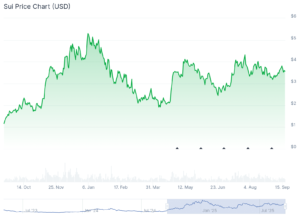Yen Braces for Hawkish Fed. Forecast as of 16.06.2025

While the Bank of Japan meeting is not expected to bring any surprises, the Federal Reserve’s actions may hold more variability. The ongoing armed conflict in the Middle East may spur inflation in the United States, allowing the Fed to extend its pause. Let’s discuss this topic and make a trading plan for the USDJPY pair.
The article covers the following subjects:
Major Takeaways
- Geopolitical risks have not strengthened the yen.
- The Bank of Japan is unlikely to raise rates before October.
- The Fed’s revised forecasts may bring surprises.
- A drop in the USDJPY pair below 143.9 will enable traders to resume selling.
Weekly Fundamental Forecast for Yen
In 2025, the US dollar lost its status as a safe-haven asset and its American exceptionalism. The primary risk to investors is currently emanating from the United States. They are withdrawing their funds from the country and investing in alternative currencies, such as the Japanese yen and the Swiss franc. Speculative short trades on the US dollar continue to rise. However, the reaction of the USDJPY pair to the rise in geopolitical risks in the Middle East is a point of concern. Will the situation soon return to normal?
Speculative Positions on the US Dollar
Source: Bloomberg.
If the US dollar is no longer a safe haven, having ceded that status to the yen, why has the USDJPY pair not fallen? Israel initiated an attack on Iran, which responded in kind, and the conflict risks becoming protracted. This could potentially result in higher oil prices and a slowdown in the global economy. If the source of the problem is not the United States, would it be advantageous to consider purchasing the greenback?
The United States is a net exporter of oil, indicating that a rise in Brent and WTI prices should have a positive impact on its currency. Japan, on the other hand, is a net importer. In addition, higher oil prices will likely boost inflation in the US, prompting the Fed to maintain rates at elevated levels for an extended period. Barclays has voiced concerns about the possibility of a hawkish move at the Federal Open Market Committee (FOMC) meeting on June 17-18, which could potentially bolster the greenback.
The results of the Bank of Japan meeting will be announced a day earlier. According to Bloomberg, a sudden increase in the overnight rate is not anticipated, with 34% of respondents believing that a rate hike will only happen in January, 30% saying October, and only 8% voting for July.
Expectations for BoJ Overnight Rate Change
Source: Bloomberg.
According to Bloomberg insiders, the BoJ anticipates higher inflation in the future, but the central bank is not in a rush to make significant decisions. The market is uncertain about the outcome of trade negotiations between Washington and Tokyo. The United States has currently imposed a 25% tariff on automobile imports, a 50% tariff on steel and aluminum, and a 10% universal tariff on imports from Japan. If the countries fail to reach an agreement, there is a risk that the universal tariff will increase to 24% in July.
According to the insights of 26% of Bloomberg’s experts, the US and Japan will unlikely reach a trade agreement before the G7 summit, while 38% predict that this will not happen.
For now, the US dollar is unlikely to regain its status as a safe-haven asset. The USDJPY rate has not declined in the face of geopolitical tensions in the Middle East, influenced by market concerns regarding the Fed’s unexpected hawkish stance. Against this backdrop, the US dollar demonstrated resilience not only against the yen but also against other global currencies.
Weekly USDJPY Trading Plan
If the USDJPY pair slides below 143.9, one may consider opening short trades. Conversely, if the pair surges above the resistance level of 145.2, it will likely correct within the downward trend and provide an opportunity to consider long positions in the short term.
This forecast is based on the analysis of fundamental factors, including official statements from financial institutions and regulators, various geopolitical and economic developments, and statistical data. Historical market data are also considered.
Price chart of USDJPY in real time mode
The content of this article reflects the author’s opinion and does not necessarily reflect the official position of LiteFinance broker. The material published on this page is provided for informational purposes only and should not be considered as the provision of investment advice for the purposes of Directive 2014/65/EU.
According to copyright law, this article is considered intellectual property, which includes a prohibition on copying and distributing it without consent.







